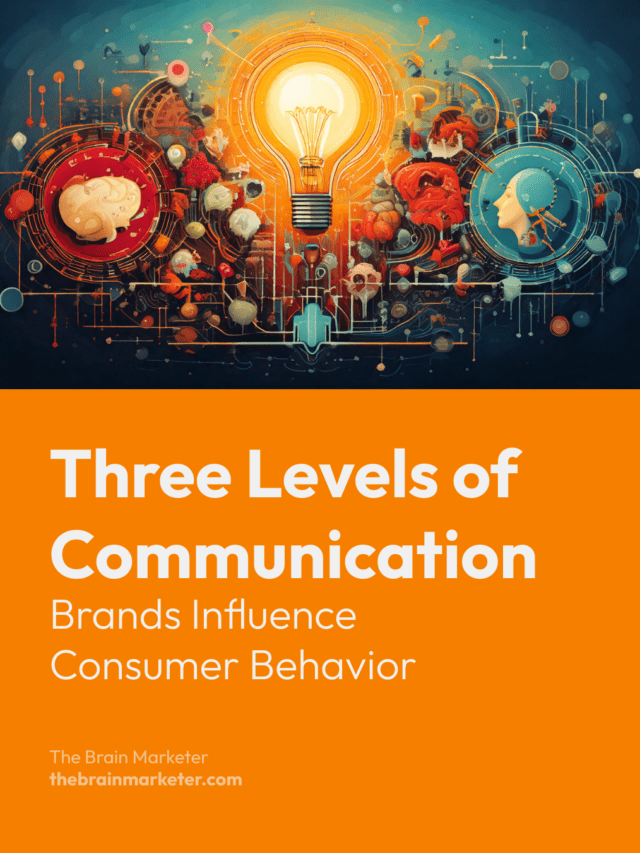Introduction
Effective communication between a brand and its audience involves navigating different levels of influence—each aimed at achieving specific marketing objectives. These levels of communication can be understood through the hierarchy of effects model, which explains the stages a consumer goes through between exposure to an advertisement and taking action. This article will explore the three levels of communication—cognitive, affective, and conative—how they interact, and how marketers can use them to effectively communicate their message and drive consumer behavior.
🎙️ Unpack the Topic with this Podcast
The Hierarchy of Effects Model
The hierarchy of effects model is a framework that outlines how advertising works by explaining the intermediate steps that occur between exposure and the ultimate consumer action. These steps involve cognitive (thinking), affective (feeling), and conative (doing) elements. Depending on the marketing goals, communication strategies can target one, two, or all three of these levels simultaneously to achieve desired outcomes.
The Three Levels of Communication
The three levels of communication—cognitive, affective, and conative—each serve a distinct purpose in the communication process between a brand (emitter) and its audience (receiver).
1. Cognitive Level: Informing the Audience
The cognitive level is concerned with providing information. It is the foundation of communication, where the primary goal is to build awareness and knowledge about the brand, product, or service. This level is particularly important when launching a new product or introducing a new brand to the market.
- Objective: Increase brand awareness, provide essential information, and educate the audience.
- Example: A brand launching a new product might use an advertisement that provides detailed information about the product’s features, benefits, and how it can solve a specific consumer problem.
Analogy: Ignoring the cognitive level in brand-building is like signing up for a driving test without ever having touched a steering wheel—it’s impossible to succeed without the basic knowledge.
Marketing Strategy:
- Use informative advertising to make consumers aware of what your product or service offers.
- Employ channels such as social media, content marketing, and educational videos to communicate key information and increase familiarity with your brand.
2. Affective Level: Shaping Consumer Preferences
The affective level deals with emotions and feelings. At this stage, brands work to create positive associations and establish an emotional connection with the consumer. This level is crucial for building brand preference and loyalty.
- Objective: Shape the consumer’s emotions and preferences towards the brand, creating a positive perception and fostering emotional engagement.
- Example: A luxury perfume brand might use a visually stunning and emotionally evocative advertisement that showcases beauty, elegance, and a sense of exclusivity to appeal to consumers’ emotions and build a strong preference.
Neuromarketing Insight: The primal brain responds strongly to emotional stimuli. Creating ads that trigger positive emotions—such as joy, trust, or excitement—helps the brand become associated with these feelings, making it more memorable and desirable.
Marketing Strategy:
- Use emotional storytelling to create compelling narratives that consumers can relate to.
- Focus on brand personality and use consistent imagery, music, and messaging that evokes desired emotions.
3. Conative Level: Driving Consumer Behavior
The conative level focuses on driving action. This is where the brand’s communication aims to influence consumer behavior, such as making a purchase, subscribing to a service, or engaging in some other desired action. It represents the ultimate goal of any advertising campaign—to create a behavioral response.
- Objective: Influence consumer behavior by prompting actions such as purchases, sign-ups, or repeat purchases.
- Example: A campaign promoting online shopping might use a limited-time offer or discount to prompt immediate purchases, appealing to both urgency and value.
The “Holy Grail” of Advertising: The conative level represents the final stage of influence—getting consumers to act. Whether it’s changing risky behaviors through public health campaigns or encouraging trial of a new e-commerce platform, the conative level aims to convert the consumer’s thoughts and feelings into concrete actions.
Marketing Strategy:
- Use call-to-action (CTA) techniques to guide the consumer towards the desired action. Examples include phrases like “Buy Now“, “Subscribe Today“, or “Limited Time Offer“.
- Employ promotions such as discounts, flash sales, or free trials to create urgency and motivate consumers to make quick decisions.
Applying the Hierarchy of Effects in Marketing Campaigns
For an advertising campaign to be successful, it often needs to incorporate all three levels of communication, depending on the stage of the consumer journey.
Example: A new banking service might launch a campaign that:
- Cognitive: Provides information on the benefits and features of the service, such as low fees and ease of use.
- Affective: Highlights customer testimonials and emotional stories about how the service improved people’s lives.
- Conative: Includes a promotional offer to encourage sign-ups, such as a $50 reward for opening a new account.
By addressing all three levels, the campaign builds awareness, creates emotional connections, and ultimately drives action.
The Importance of a Holistic Approach
To maximize effectiveness, marketing campaigns should consider all three levels of communication as part of a holistic approach. This allows the brand to build a strong foundation (cognitive), foster positive feelings (affective), and ultimately drive the desired behavior (conative). Depending on the campaign’s goals, more emphasis may be placed on one level over the others, but understanding how they interconnect is essential for successful marketing.
Conclusion
The three levels of communication—cognitive, affective, and conative—are essential for guiding consumers from awareness to action. By providing information, evoking emotions, and prompting behaviors, brands can effectively communicate with their audience and influence their decisions. Whether you’re trying to educate, build emotional connections, or drive immediate action, understanding and applying these levels of communication will help your brand achieve its marketing objectives.

Vincent Heimann is a marketing project manager and neuromarketing enthusiast. He founded The Brain Marketer to bridge neuroscience and marketing through accessible, science-based content. With over 10 years of experience in digital strategy, UX/UI and communication, he shares practical insights to help brands connect with the human brain — ethically and effectively

